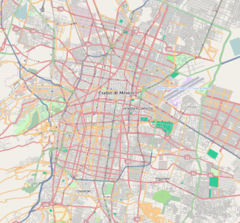
The Instituto Nacional de Antropología e Historia is a Mexican federal government bureau established in 1939 to guarantee the research, preservation, protection, and promotion of the prehistoric, archaeological, anthropological, historical, and paleontological heritage of Mexico. Its creation has played a key role in preserving the Mexican cultural heritage. Its current national headquarters are housed in the Palace of the Marqués del Apartado.

Cuicuilco is an important archaeological site located on the southern shore of Lake Texcoco in the southeastern Valley of Mexico, in what is today the borough of Tlalpan in Mexico City. Some historians believe this settlement goes back to 1400 BC. Other historians believe the pyramid could be the oldest building in the Americas circa 6,500 BC.

The National Museum of Anthropology is a national museum of Mexico. It is the largest and most visited museum in Mexico. Located in the area between Paseo de la Reforma and Mahatma Gandhi Street within Chapultepec Park in Mexico City, the museum contains significant archaeological and anthropological artifacts from Mexico's pre-Columbian heritage, such as the Stone of the Sun and the Aztec Xochipilli statue.

Cerro de la Estrella is a Mesoamerican archaeological site located in southeastern Central Mexico's Valley of Mexico, in the Iztapalapa alcaldía of Mexico City at an elevation of 2460 meters (8070 ft) above sea level, hence its Summit is 224 m over the Valley of Mexico level. At the southeast edge of what was the Great Texcoco Lake.

Mesoamerican architecture is the set of architectural traditions produced by pre-Columbian cultures and civilizations of Mesoamerica, traditions which are best known in the form of public, ceremonial and urban monumental buildings and structures. The distinctive features of Mesoamerican architecture encompass a number of different regional and historical styles, which however are significantly interrelated. These styles developed throughout the different phases of Mesoamerican history as a result of the intensive cultural exchange between the different cultures of the Mesoamerican culture area through thousands of years. Mesoamerican architecture is mostly noted for its pyramids, which are the largest such structures outside of Ancient Egypt.

Tlatelolco is an archaeological excavation site in Mexico City, Mexico where remains of the pre-Columbian city-state of the same name have been found. It is centered on the Plaza de las Tres Culturas. On one side of the square is this excavated Tlatelolco site, on a second is the oldest European school of higher learning in the Americas called the Colegio de Santa Cruz de Tlatelolco, and on the third stands a mid-20th-century modern office complex, formerly housing the Mexican Foreign Ministry, and since 2005 used as the Centro Cultural Universitario of UNAM.

In Spain, the legal designation Conjunto histórico is part of the national system of heritage listing. It is applied to buildings in a given locality. It is typically used to protect complete villages, such as Peñaranda de Duero, or historic quarters of towns such as Avilés.
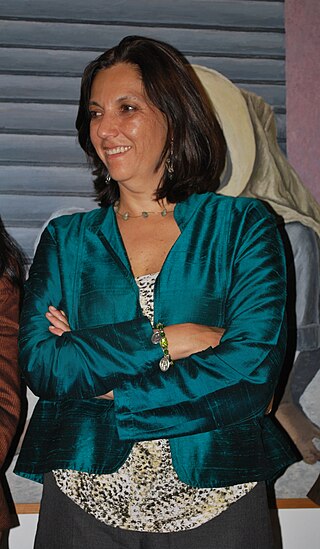
The Instituto Nacional de Bellas Artes y Literatura, located in the Palacio de Bellas Artes in Mexico City, is the Mexican institution in charge of coordinating artistic and cultural activities in the country.
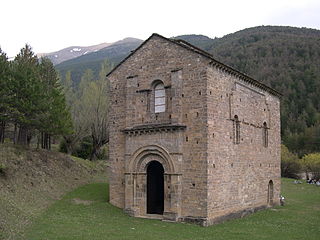
A Bien de Interés Cultural is a category of the heritage register in Spain. The term is also used in Colombia and other Spanish-speaking countries.
Copilco was an important Mesoamerican ceremonial center, southwest of Mexico City, Mexico. Copilco is located approximately four kilometers north of Cuicuilco. Both were covered by lava from several eruptions of the Xitle volcano three thousand years ago.

Cuahilama is a Hill and an archaeological site located south east of Santa Cruz Acalpixca, in the Cuahilama neighborhood, near the Xochimilco Archaeological Museum, in Mexico City. It was a ceremonial center, in the hill are prehispanic images engraved in basaltic rock.
Juan Pedro Laporte Molina was a prominent Guatemalan archaeologist best known for his work on the ancient Maya civilization. He studied in the United States at the University of Arizona, in which he enrolled at the age of nineteen. After just one year he transferred to the Escuela Nacional de Antropología e Historia in Mexico. He continued his studies at the Universidad Autónoma de México from 1972 to 1976, from which he graduated with a doctorate in archaeology. He worked as a research assistant at the Museo Nacional de Antropología in Mexico City from 1967 through to 1976. Laporte worked at various archaeological sites while he was in Mexico, including Tlatilco, Chichen Itza and Dainzú. He first began working as an archaeologist in Guatemala in the 1970s, and was the head of the School of History of the Universidad de San Carlos de Guatemala (USAC) for more than thirty years. He first entered USAC in 1977, soon after returning from Mexico. In 1974 he carried out investigations at the Maya archaeological site of Uaxactun in the northern Petén Department of Guatemala. Between 1974 and 1976 he carried out archaeological investigations in Antigua Guatemala, which has since been designated as a UNESCO World Heritage Site, and around Lake Izabal.

The Monument to Cuauhtémoc is an 1887 monument dedicated to the last Mexica ruler (tlatoani) of Tenochtitlan Cuauhtémoc, located at the intersection of Avenida de los Insurgentes and Paseo de la Reforma in Mexico City. It is the work of Francisco Jiménez and Miguel Noreña in the "neoindigenismo", and was proposed to promote the new government of Porfirio Díaz.

The National Monuments of Mexico refers to the buildings and monuments that are protected heritage of the nation, and are declared as such in the Registro Público de Monumentos y Zonas Arqueológicos e Históricos maintained by the Instituto Nacional de Antropología e Historia and the Registro Público de Monumentos y Zonas Artísticos maintained by the Instituto Nacional de Bellas Artes y Literatura.
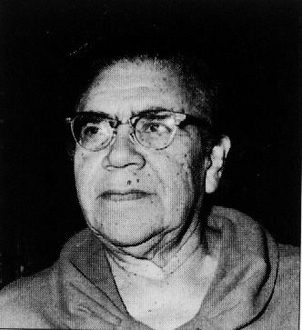
Eulalia Guzmán Barrón (1890–1985) was a pioneering feminist and educator and nationalist thinker in post-revolutionary Mexico. She was one of the first women to work in the field of Mexican archeology. She was the lead investigator of the remains found in Ixcateopan, Guerrero, which she alleged to be those of the last Aztec Emperor, Cuauhtémoc. Three boards of inquiry on the archeological work done at the site refuted Guzmán's findings, calling her field methods into question. Her lasting legacy was the collection of Mexico's history from archives throughout the world and creation of the National Library of Anthropology and History.
María del Pilar Luna Erreguerena was a Mexican underwater archaeologist, pioneer in the field of archaeology, who founded the Division of Underwater Archaeology of the National Institute of Anthropology and History (INAH). She was awarded her undergraduate degree by the National School of Anthropology and History and the National Autonomous University of Mexico (UNAM), from which she then obtained her master's degree in Anthropological Sciences.
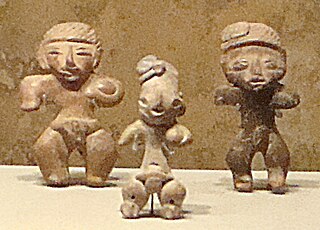
Ticomán is an archaeological site located in the Gustavo A. Madero municipality in Mexico City. It corresponds to an ancient town of the Pre-Classical Mesoamerican period, whose inhabitants could have been Otomis. It was a contemporary population of Tlatilco, Cuicuilco, El Arbolillo and Zacatenco.










